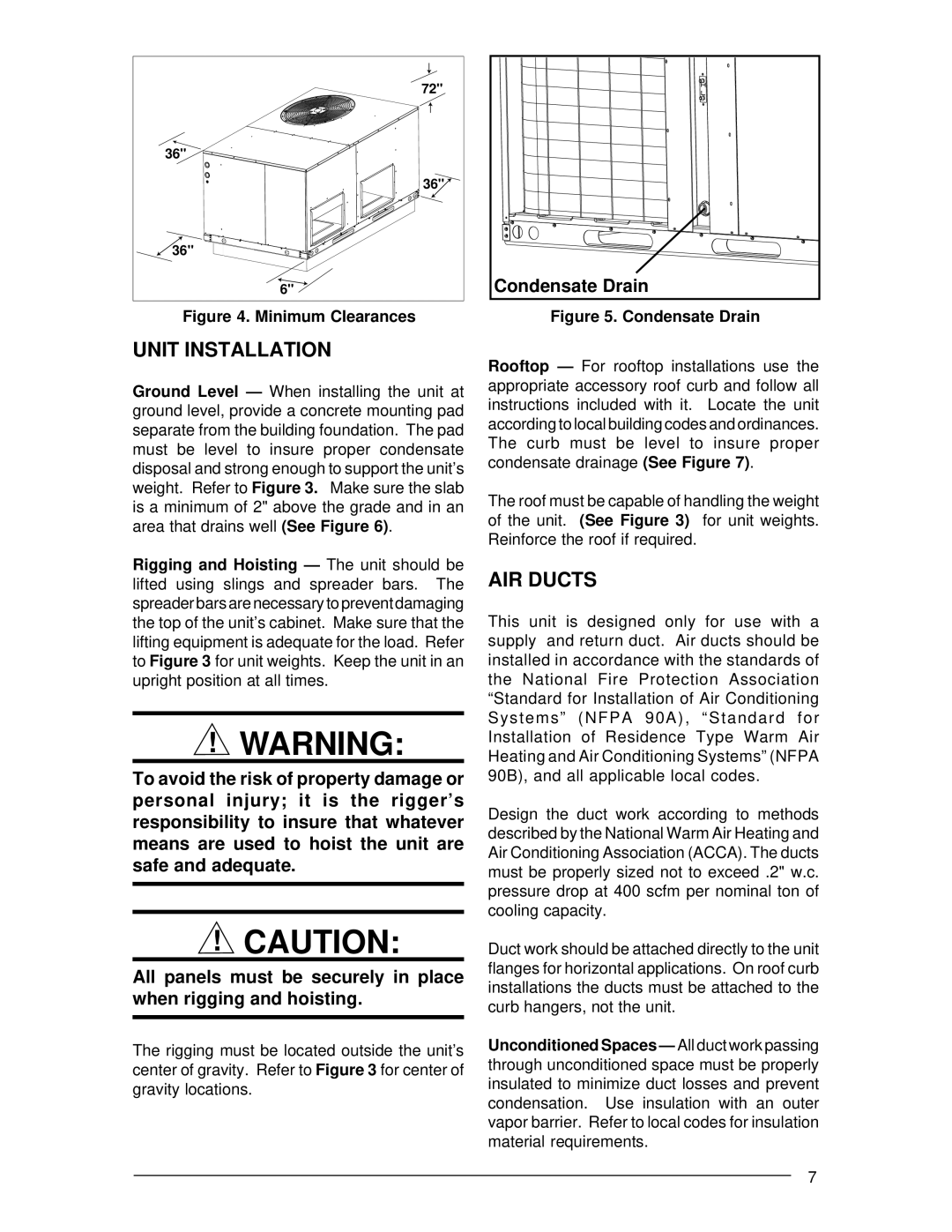
72" |
36" |
36" |
36" |
6" |
Figure 4. Minimum Clearances
UNIT INSTALLATION
Ground Level — When installing the unit at ground level, provide a concrete mounting pad separate from the building foundation. The pad must be level to insure proper condensate disposal and strong enough to support the unit’s weight. Refer to Figure 3. Make sure the slab is a minimum of 2" above the grade and in an area that drains well (See Figure 6).
Rigging and Hoisting — The unit should be lifted using slings and spreader bars. The spreader bars are necessary to prevent damaging the top of the unit’s cabinet. Make sure that the lifting equipment is adequate for the load. Refer to Figure 3 for unit weights. Keep the unit in an upright position at all times.
!WARNING:
To avoid the risk of property damage or personal injury; it is the rigger’s responsibility to insure that whatever means are used to hoist the unit are safe and adequate.
!CAUTION:
All panels must be securely in place when rigging and hoisting.
The rigging must be located outside the unit’s center of gravity. Refer to Figure 3 for center of gravity locations.
Condensate Drain |
Figure 5. Condensate Drain
Rooftop — For rooftop installations use the appropriate accessory roof curb and follow all instructions included with it. Locate the unit according to local building codes and ordinances. The curb must be level to insure proper condensate drainage (See Figure 7).
The roof must be capable of handling the weight of the unit. (See Figure 3) for unit weights. Reinforce the roof if required.
AIR DUCTS
This unit is designed only for use with a supply and return duct. Air ducts should be installed in accordance with the standards of the National Fire Protection Association “Standard for Installation of Air Conditioning Systems” (NFPA 90A), “Standard for Installation of Residence Type Warm Air Heating and Air Conditioning Systems” (NFPA 90B), and all applicable local codes.
Design the duct work according to methods described by the National Warm Air Heating and Air Conditioning Association (ACCA). The ducts must be properly sized not to exceed .2" w.c. pressure drop at 400 scfm per nominal ton of cooling capacity.
Duct work should be attached directly to the unit flanges for horizontal applications. On roof curb installations the ducts must be attached to the curb hangers, not the unit.
Unconditioned Spaces — All duct work passing through unconditioned space must be properly insulated to minimize duct losses and prevent condensation. Use insulation with an outer vapor barrier. Refer to local codes for insulation material requirements.
7
